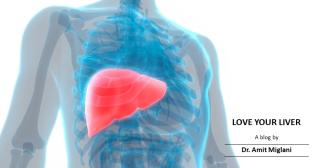
Splenomegaly Explained: Early Warning Signs, Risk Factors and When to Seek Help
Splenomegaly is a condition characterised by an enlarged spleen, which is caused by various underlying health issues. The spleen is an important site for the storage and maturation of T and B lymphocytes and plays an important role in haematopoiesis. The major functions of the spleen include:
- Blood storage: It stores blood that can later be released in case of severe bleeding to help maintain blood pressure and circulation.
- Blood filtration: The spleen filters blood by removing old or damaged blood cells or cellular waste.
- Immune response: It produces white blood cells and antibodies that help to fight against infections.
- Fluid balance: The spleen helps to maintain fluid balance in the body.
- Antibody protection: It produces antibodies that help to protect against infections.
While the spleen is a vital organ that helps filter blood and fight infections, an enlarged spleen can lead to serious complications such as spleen rupture or tissue death if left untreated.
What is splenomegaly?
The spleen is a small-sized organ located in the upper abdominal part, just below the rib cage. It plays a significant role in the immune system by filtering blood and removing old or damaged blood cells. Splenomegaly occurs when the spleen becomes enlarged, which can be due to various medical conditions. The size of the spleen varies based on an individual’s weight, height and sex, with up to 12 cm in craniocaudal length and 70 to 200 g of weight. Larger spleens are typically found in men and heavier or taller individuals. However, splenomegaly is when the spleen length exceeds between 12 cm and 20 cm and weighs between 400 to 500 g.
Causes
Splenomegaly causes commonly include the following:
- Infections: Viral infections such as mononucleosis and HIV, bacterial infections such as tuberculosis and endocarditis and parasitic infections such as malaria and toxoplasmosis cause stress on the immune function of the spleen, triggering it to overproduce antibodies and immune cells.
- Underlying condition: Conditions like chronic hepatitis or cirrhosis can lead to portal hypertension, where pressure builds up in the blood vessels running through the liver and spleen. This vascular pressure can cause blood to pool, enlarging the spleen.
Other possible causes include:
- Cancer: Blood cancers such as leukaemia, myeloproliferative neoplasms (MPNs) and lymphomas can infiltrate the spleen with multiplying foreign cells.
- Focal Lesions: Benign growths like cysts or abscesses and metastatic cancer can spread from other areas and enlarge the spleen.
- Autoimmune diseases: Chronic inflammatory conditions such as lupus, sarcoidosis and rheumatoid arthritis can cause an increased immune response and spleen hyperplasia.
- Blood disorders: Conditions like haemolytic anaemia and neutropenia, which cause early destruction of red blood cells, can overload the spleen, which is responsible for removing them.
- Inherited metabolic disorders: Conditions like Niemann-Pick disease, Gaucher disease and sickle cell disease cause various substances to build up in the blood and organs, infiltrating the spleen.
- Thrombosis: A blood clot blocking one of the vessels in the liver or spleen can cause pressure and blood to build up in the spleen.
Symptoms
Splenomegaly symptoms can vary widely and often depend on the underlying cause. Recognising the early warning signs of splenomegaly is crucial for timely diagnosis and treatment. Here are some of the common symptoms to watch for:
- Abdominal discomfort: Nondescriptive discomfort or pain in the left upper abdomen, which may be referred to the left shoulder
- Anorexia and early satiety: Decreased appetite and feeling full after eating small quantities
- Abdominal bloating and distention: Feeling of fullness or bloating in the abdomen
- Constitutional symptoms: Weakness, weight loss and night sweats, which may be suggestive of a malignant illness
- Signs of infection: Fever, chills, generalised malaise or localised symptoms of infection
- Liver disease symptoms: Symptoms specific to cirrhosis or hepatitis, including jaundice or fluid buildup in the abdomen
- Anaemia symptoms: Light-headedness, shortness of breath on exertion, bruising and bleeding, tiny red or purple spots on the skin
The splenomegaly symptoms can also reflect the underlying condition causing the enlarged spleen that can compress the stomach, causing abdominal discomfort and other associated symptoms, as mentioned.
Risk factors
Risk factors for developing splenomegaly can increase for various reasons. Familiarity with these risk factors will assist in detection and treatment:
- Infections: Viral infections (for example, mononucleosis), bacterial infections (for example, endocarditis) and parasitic infections (for example, malaria) also cause splenomegaly.
- Liver diseases: Disorders like cirrhosis and hepatitis may cause splenomegaly.
- Blood disorders: Conditions such as haemolytic anaemia, sickle cell anaemia and thalassemia can lead to an enlarged spleen because the organ works harder to filter out the damaged blood cells.
- Cancer: Types of cancer like lymphoma and leukaemia can lead to spleen enlargement.
- Genetic disorders: Conditions like Gaucher’s disease and Niemann-Pick disease can lead to splenomegaly.
- Autoimmune disorders: Conditions like systemic lupus erythematosus (SLE) can cause the spleen to become enlarged.
- Congestive heart failure: This condition can lead to increased pressure in the veins that supply the spleen, causing it to enlarge.
Infections are the most common risk factor for splenomegaly in children. In addition, splenomegaly in adults can result from various causes, like infections and other systemic conditions such as blood or liver disorders.
When to seek help?
You should get medical attention immediately if you experience any of the following symptoms:
- Ongoing abdominal pain: If you have constant pain or discomfort in the upper left side of your abdomen, particularly if the pain is severe or worsening.
- Unexplained weight loss: Drastic weight reduction with no obvious cause may indicate an underlying health problem, including splenomegaly.
- Frequent infections: Frequent infections or a history of recurrent infections can indicate that your spleen is not working properly.
- Jaundice: Yellowing of skin and eyes could indicate liver disease, which can also impact the spleen, potentially leading to splenomegaly.
- Swelling or lumps: If you notice any unusual swelling or lumps in your abdomen, especially in the upper left area, it is important to see a doctor.
- Severe fatigue: If you are feeling severe fatigue that does not improve with rest, it could be a sign of an underlying condition.
- Bleeding or bruising: If you notice easy bruising or bleeding, especially if it is unexplained, it could be a sign of a blood disorder or an enlarged spleen.
Diagnosis
Splenomegaly diagnosis usually involves a combination of various tests as follows:
- Physical exam: A doctor conducts a physical examination to find visible or palpable spleen enlargement.
- Imaging tests: Radiographic tests like ultrasound, CT scan or MRI can help visualise the size and condition of the spleen.
- Blood tests: Blood tests are used to analyse underlying conditions like infections, blood disorders or liver disease.
- A correct diagnosis of splenomegaly in children and adolescents must consider age-dependent size reference values.
- Bone marrow biopsy: In some cases, the bone marrow biopsy helps to check the blood content in the bone marrow.
Treatment
Splenomegaly treatment depends on the underlying cause. Options may include:
- Medications: Antibiotics for infections, chemotherapy for cancer or medications to manage blood disorders.
- Surgery: In certain cases, surgical removal of the spleen (splenectomy) may be necessary.
- Lifestyle changes: Managing underlying conditions through lifestyle changes, such as a healthy diet and regular exercise, can help reduce the risk of splenomegaly.
Conclusion
Splenomegaly is a condition that may lead to serious health problems. By identifying the early signs, knowing the risk factors and being aware of when to seek help, one can proactively play an active role in managing health. Contact a medical professional to discuss the symptoms and receive appropriate treatment. Getting diagnosed early can have a huge impact on your health and well-being.



















